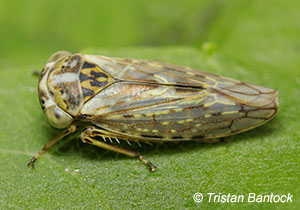 |
The Auchenorrhyncha Recording SchemeHistoryThe
Auchenorrhyncha Recording Scheme was set up in 1979 by Keith Payne
when working for what was then the Nature Conservancy Council. He
gathered and collated a large amount of information from published
sources, together with his own records. In 1983, the Scheme
was
passed on to Walter Le Quesne, who greatly extended the collation of
information, especially from museum material, and produced the first
distribution maps for individual species (by writing a special
programme on his BBC computer!). Unfortunately, he had to relinquish
co-ordination of the scheme in 1986 due to ill-health. Since
then, the scheme has been managed by Alan Stewart.
Purpose The scheme is designed to collect, store and synthesise records of Auchenorrhyncha in Britain and Ireland (including the Isle of Man and the Channel Islands), specifically to: |
|
|
 Above: Idiocerus herrichi. This previously scarce species has become much more common in recent years |
| Activities The scheme operates the following:
|
 Above: Examining Auchenorrhyncha collected at a field meeting |
| Data
sources Relevant records are derived from a number of different sources:
|
|
| Current
status The
scheme currently holds approximately 60,000 records
electronically. It is estimated that a further 20,000 records exist in
paper format in notebooks, files and reports which need to be
entered manually into the database. The scheme receives approximately
1,000 new records each year, although this is extremely variable. Most
recorders now submit their data electronically (via Excel spreadsheets,
field-delineated text files etc).
Future plans The recording scheme is now firmly established as the primary source of data on the occurrence of Auchenorrhyncha within Britain and Ireland. Future projects include:
|
|